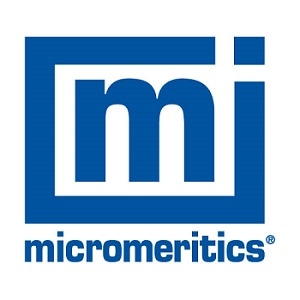Dry powder inhalers or DPIs are medical devices used for pulmonary drug delivery. The formulations in DPIs comprise adhesive mixtures of a carrier and the drug. For reaching the tiny airways of the deep lung, the drug particles have to exhibit an aerodynamic diameter of 1µm to 5µm.
Particles at this size are cohesive and show poor flow properties and poor dosing. Hence carrier based formulations have been invented where the drug is attached to the surface of coarser carrier particles (50µm - 200µm) of adequate flowability.
Interparticle interactions between the carrier and the drug play a crucial role in carrier-based dry powder inhalers (DPIs). It is essential that on one hand, they are high enough that the drug adheres to the carrier ensuring uniform dosing and on the other hand low enough that drug detachment during inhalation is guaranteed.
In this article, the impact of physical surface treatment by impact and friction in a ball mill on glass beads is analyzed. By treating the glass beads with small hard grinding materials, very fine surface roughness that are only visible at large magnifications could be introduced as Figure 1.
.png)
Figure 1. Glass beads during different stages of treatment.
Materials
Glass Beads were used in the size range of 400µm to 600µm. Tungsten carbide and quartz were the grinding materials used. For comparison, soda lime glass beads have a hardness of about 6 on the Mohs scale.
Tungsten carbide was provided from Wolfram Bergbau und Huetten AG, St. Martin i.S./Austria and quartz was obtained from Quarzwerke Austria GmbH, Melk/Austria.
Preparation
Surface modification of glass beads was mechanically performed by friction and impaction in a ball mill (Ball Mill S2, Retsch, Haan/Germany). Glass beads were processed for 4 and 8 hours with quartz and tungsten carbide powder at 424rpm. The ratio of grinding material and glass beads was 1:1 (V/V).
After treatment, glass beads were repeatedly washed with deionised water and dried in an oven at 150°C for 48 hours. Samples were stored in a desiccator before analysis.
Analysis
Initial analyses were made with nitrogen as adsorber gas, but as the specific surface area of glass beads of the size mentioned above is rather small, no satisfactory results could be obtained. Krypton is then used as the adsorber gas and further analyses is done.
The sample tubes were filled with glass beads to compensate for the small specific surface areas of the glass beads and to increase the absolute surface area. Consequently the average sample mass was about 12 g glass beads.
A Tristar II surface area and porosity analyzer (Micromeritics Instrument Company, Norcross/U.S.A) was used for the analysis. A 7 point analysis was made between 0.07 and 0.25 relative pressure and the specific surface area was determined according to the Brunauer-Emmet-Teller (BET) equation.
In order to study the results of the measurements and to make sure that the instrument is capable to measure such small surface areas accurately the Micromeritics Reference Material Alumina was weighed in, in such a small amount that the absolute surface area was in the range of the absolute surface area measured for the glass beads.
By reducing the sample mass of the standard to about 0.5g, an absolute surface area of 0.105m2 was reached, which is comparable to the absolute surfaces measured for the glass beads that were in the size range of 0.09 to 0.2m2.
Despite the small sample size of the standard, the measurements still gave a specific surface area of 0.24 ± 0.06m2/g (mean, n=3 ± SD) which is acceptable within the specified range (0.28 ± 0.03m2/g).
Figure 2 shows an example of one of the Alumina standard BET surface area plots. Finally it is shown that the instrument is capable of providing feasible results even below the measuring range specified by the manufacturer.
.png)
Figure 2. BET surface area plot of Alumina standard analyzed with krypton (10 point analysis between 0.05 and 0.025 relative pressure, weighed portion 0.5488g)
Figure 3 shows the results of the specific surface area measurements of untreated and physically modified glass beads. Glass beads that were treated with tungsten carbide for 8 hours show as the highest surface area and glass beads treated with quartz for 4h as the lowest.
Treating with quartz for 8h and treating with tungsten carbide for 4h lead to specific surface areas in between. Actually, the treatment with tungsten carbide for 4h leads to a lower surface area than the treatment with tungsten carbide for 8h and grinding with quartz for 8h leads to a higher specific surface area than grinding with quartz for 4h. The results are in accordance with the hardness of the grinding materials and the processing time.
.png)
Figure 3. Specific surface are of untreated and physical modified glass beads (mean of n=3 ± SD)
Conclusion
Gas adsorption has been proved to be a suitable tool to quantify changes in the surface topography/roughness of glass beads even below the measuring range specified by the manufacturer.
The measured surface areas are in line with the hardness of the grinding materials, the processing time and the SEM images. By reducing the sample mass of the standard it could be demonstrated that the very small surface areas measured are possible.

This information has been sourced, reviewed and adapted from materials provided by Micromeritics Instrument Corporation.
For more information on this source, please visit Micromeritics Instrument Corporation.